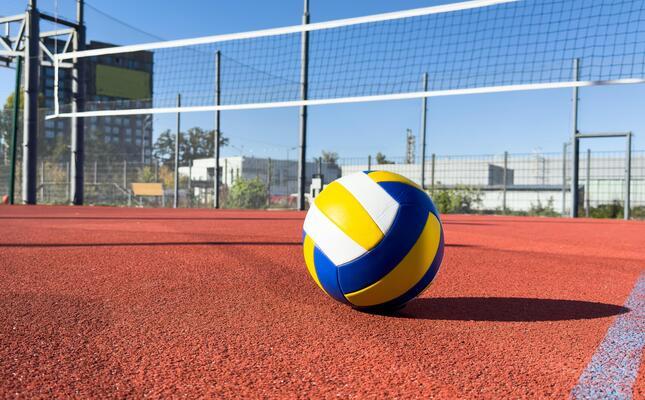Selecting the appropriate volleyball court flooring is crucial to provide safety for players, maximum performance, and durability over time. Whether you are constructing a recreational facility, school court, or professional stadium, knowing the important factors in choosing flooring can assist you in making the correct investment. This article discusses everything from court size to material types to assist you in choosing the ideal flooring according to your requirements.
Know Volleyball Court Size and Measurement
Prior to choosing a surface, you should be aware of the standard volleyball court dimensions. Official dimensions of a volleyball court are 18 meters long and 9 meters wide. Precise measurement of a volleyball court guarantees correct gameplay and conformity to tournament standards.
When building a court, especially for competition or training, precise marking of the volleyball court colour zones (such as attack lines and service areas) is essential. This impacts the visibility and fairness of the game.
Consider the Type of Volleyball Court: Indoor or Outdoor
One of the first decisions is whether your court will be indoor or outdoor, as this determines the type of volleyball court surface material you’ll need.
Indoor courts: Typically call for cushioned synthetic surfaces such as PVC or polyurethane, providing high shock absorption and non-slip characteristics.
Outdoor volleyball court flooring: Has to be able to endure weather conditions. Outdoor volleyball court flooring material consists of UV-resistant modular tiles or acrylic-coated asphalt surfaces.
Each environment poses certain requirements, and using the correct surface ensures durability and performance.
Choose the Right Surface Material
Choosing the right volleyball court surface material is based on use, maintenance expectations, and budget.
- Synthetic acrylic volleyball court surfaces are perfect for high-performance play indoors.
- Outdoor volleyball court flooring is preferred using modular tiles for their ease of installation, weather resistance, and minimal maintenance.
- Acrylic-coated concrete is also a typical choice for outdoor recreational purposes.
- Opt for flooring that provides anti-slip and shock-absorbing support to minimize injuries and enhance play.
Collaborate with Professional Volleyball Court Contractors
To make your project satisfy all requirements, hire professional volleyball court contractors or volleyball court installers. They assist in site assessment, volleyball court installation, and correct surface application.
They also ensure that your court adheres to correct volleyball court measurement and local or international standards.
Plan for the Long Term: Durability and Maintenance
Flooring is not merely a matter of installation—it's about long-term performance. High-quality materials reduce maintenance and surface damage costs. Most volleyball court flooring systems are designed to be modular, with individual tile replacement without resurfacing the entire surface. Professional installation guarantees level base, correct drainage (for outdoor courts), and conformity to court layout specifications.
Conclusion
Selecting the proper volleyball court flooring is a matter of finding balance among performance, durability, safety, and expense. Think about your court conditions—indoor or outdoor—and choose materials to suit. Use precise volleyball court measurements, hire professional volleyball court contractors, and ensure durable volleyball court surface materials. Whether you are constructing a volleyball field for schools, sports clubs, or professional use, careful choice of flooring guarantees years of safe and competitive play.
